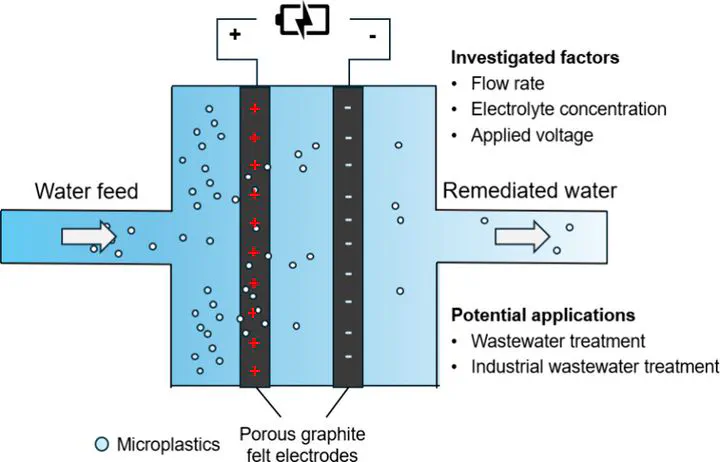Utilizing Electrosorption for Efficient Removal of Polyethylene Microplastics from Water: Critical Factors and Mechanistic Insights
May 29, 2025·,,,,,,,·
0 min read
Zhikun Chen
Maria Elektorowicz
Zhibin Ye
Qi Feng
Zheng Wang
Linxiang Lyu
Xuelin Tian
Chunjiang An

Abstract
Microplastics (MPs) produced by human activities can enter the environment through wastewater systems. A significant quantity of MPs still reaches the environment via wastewater treatment plant (WWTP) effluent because the techniques commonly used in WWTPs are not effective at removing MPs, especially smaller particles. To address this, an electrosorption (ES) method was developed in this study to separate MPs (3–5 μm polyethylene particles) from water using graphite felt electrodes. Electrosorption experiments were conducted using a static water cell and a flow-through cell to examine the influence of hydrodynamic forces. Increasing the voltage (up to 12 V) enhanced electrostatic attraction, accelerating removal. Higher flow rates improved MP transport to the electrode, boosting the efficiency. The highest removal (96.9%) occurred at 80 mL/min, 12 V, and 20 mM KNO3 after 150 min. By analyzing the influence of various parameters on MP removal efficiency and exploring the underlying mechanisms through DLVO theory, this study establishes a foundation for future advancements in ES for MP removal. Future studies could focus on investigating the removal of MPs using ES in more complex real-world environments.
Type
Publication
ACS ES&T Engineering